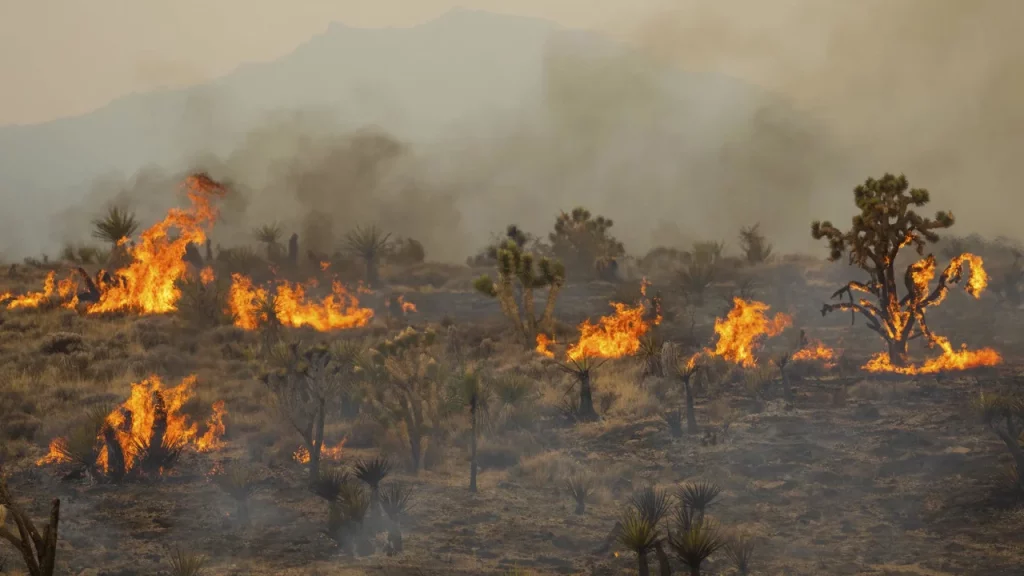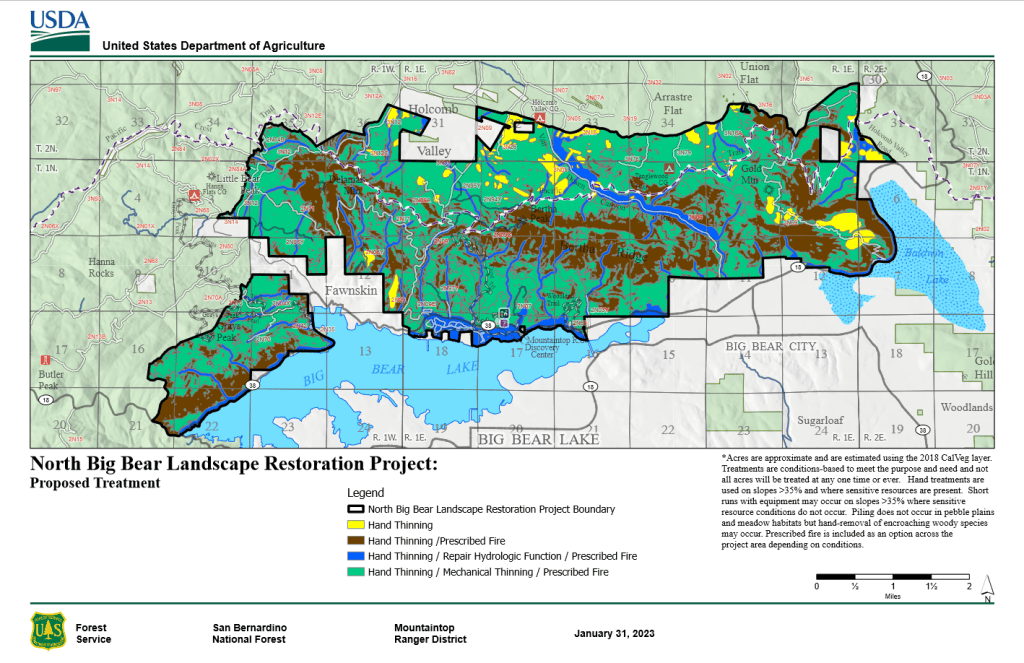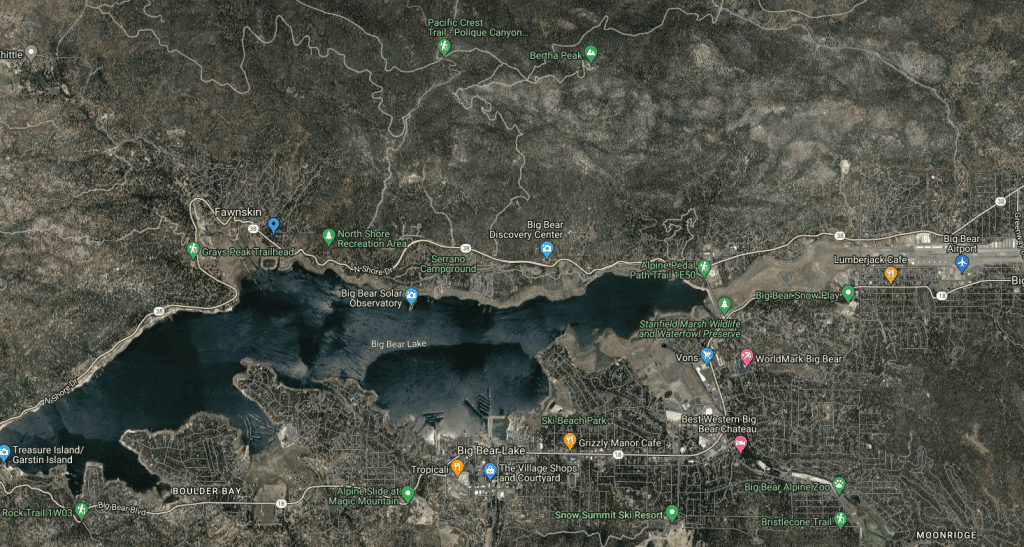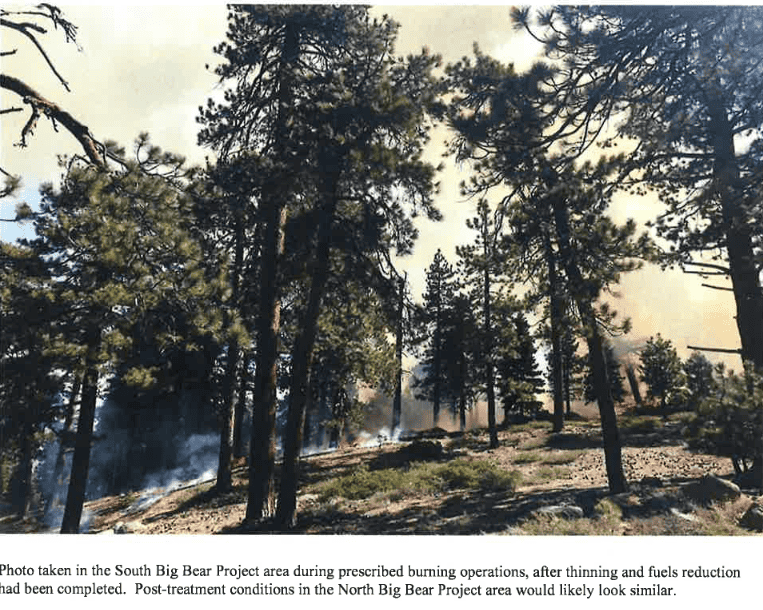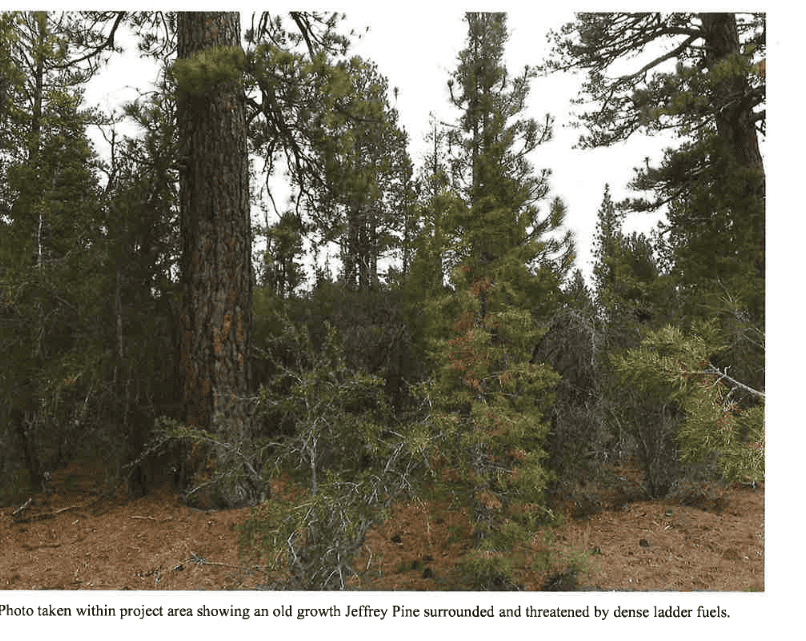
New lawsuit: Earth Island Institute v. Moore (E.D. Cal.)
On July 13, Earth Island Institute and Sequoia Forestkeeper initiated a lawsuit against the Nelder Grove Fuels Reduction Project in a sequoia grove on the Sierra National Forest, authorized along with other projects in a 2022 decision memo. It is the result of the 2017 Railroad Fire which burned 80% of the Nelder Grove Historical Area. The complaint alleges that the project is not consistent with the forest plan requirements to protect the sequoia grove (both the plan it was prepared under and the recently revised plan). Plaintiffs assert that the ongoing project is killing the giant sequoias that regenerated as a result of the Railroad Fire by logging in that portion of Nelder Grove.
Settlement
On July 17, the federal government signed off on an agreement to settle four lawsuits brought by states and environmental organizations against diverting funds for construction of the Mexico border wall during the Trump Administration. The government agreed to redirect the funding to military construction projects and to undertake several actions promoting wildlife connectivity and conservation to mitigate damage caused by the wall. This includes the construction of 24 wildlife passages in remote areas on public lands and opening of nine stormwater gates along the wall, funding to acquire a 1,300-acre chunk of critical wildlife habitat east of San Diego, and additional funding for endangered and threatened wildlife conservation research. (The article has a link to the settlement agreement; specific locations of wall gaps are redacted.)
New lawsuit: Center for Biological Diversity v. Federal Emergency Management Agency (D. Or.)
On July 17, the Center and Cascadia Wildlands sued FEMA and the U. S. Fish and Wildlife Service over plans to use federal disaster funding to rebuild a logging road in the Tillamook State Forest (Oregon) due to the harm it would cause protected coho salmon and marbled murrelets. The complaint alleges violations of NEPA and ESA. (The article includes a link to the complaint.)
Court decision in American Forest Resource Council v. U.S.A. (D.C. Cir.)
On July 18, the circuit court issued an opinion affirming the expansion of the Cascade-Siskiyou National Monument (which agrees with a previous 9th Circuit opinion). The legal arguments in these cases hinged on whether the Oregon and California Lands (O&C) Act committed approximately 40,000 acres of the monument expansion to commercial logging, making those BLM lands ineligible for inclusion in a monument. This court concluded, “The goal of the O&C Act, then, was to ‘provide conservation and scientific management for this vast Federal property…’ and the Monument’s expansion is itself consistent with sustained yield forestry.” (More background is provided in this press release.)
Court decision in County of Ventura v. U. S. Forest Service (C.D. Cal.), City of Ojai v. U. S. Forest Service (C.D. Cal.), Los Padres Forestwatch (and 6 others) v. U. S. Forest Service (C.D. Cal.)
On July 19, the district court determined that the city of Ojai and Ventura County did not have legal standing to challenge the Reyes Peak Forest Health Project on the Los Padres National Forest, finding that effects on tourism and tax revenue were “speculative.” The court found that the 755-acre chaparral treatment project was consistent with the forest plan, and complied with the Roadless Area Conservation Rule’s limitations on logging larger trees and with the Endangered Species Act, and that a categorial exclusion was sufficient environmental review. According to the plaintiffs, the Forest Service received more comments on this proposal than any other project in the history of the Los Padres.
Settlement of Wild Horse Fire Brigade v. U. S. Bureau of Land Management (D. D.C.)
On July 19, the U.S. Department of Justice settled the lawsuit brought against the BLM involving the roundup of wild horses within and adjacent to the Pokegama Herd Management Area in southern Oregon. BLM agreed to conduct an excess determination as required by the Free Roaming Wild Horse and Burro Act, and to follow NEPA procedures before continuing a roundup. The article includes a link to the original complaint (and tells us more about their arguments).
(In yet another plot twist for the fire/fuels management debate: “the herd of wild horses owned and managed by local rancher/researchers (William Simpson & Michelle Gough) in conjunction with Wild Horse Fire Brigade, were instrumental in aiding CALFIRE during the deadly 2018 Klamathon Fire via wildfire fuels reductions prior to the onset of the wildfire, by creating and maintaining areas of reduced grass and brush fuels.”)
New lawsuit
In eastern Nevada, activists have sued the BLM after 21 horses died during a roundup in the Antelope Complex.
Notice of intent to sue
On July 19, the Center for Biological Diversity and Maricopa Audubon Society notified the U.S. Fish and Wildlife Service that the agency is in violation of the Endangered Species Act due to its unreasonable delay in proceeding with a proposed rule to revise the existing critical habitat designation for the endangered Mount Graham red squirrel. Past logging of its habitat on the Coronado National Forest contributed to its listing, and Forest Service actions in its habitat have been challenged.
Withdrawal of project litigated in Center for Biological Diversity v. Haaland (D. Nev.)
On July 20, two weeks after the lawsuit was filed, the BLM halted a proposed lithium mining operation near Ash Meadows National Wildlife Refuge over concerns that the drilling could impact the groundwater, the river it feeds and endangered and threatened species that depend on it. Rover Metals will be required to submit a plan of operations with more information to BLM so the bureau can determine if it’s possible to mine without damaging the refuge or surrounding area.
Court decision in Rocky Mountain Wild, Inc. v. U. S. Bureau of Land Management (D. Colo.)
Plaintiffs alleged that, with regard to their 2019 FOIA request, “ongoing FOIA violations by Defendants have prejudiced RMW’s ability to fully participate in ongoing federal land management decisions, including the National Environmental Policy Act (“NEPA”) processes for the Tres Rios Resource Management Plan (“RMP”) Area of Critical Environmental Concern (“ACEC”) Amendment Process” specifically with regard to the Gunnison sage-grouse, and “under the heightened standard of the FOIA Improvement Act of 2016.” In an earlier decision, the court required a more specific “Vaughn Index” documenting the nature and harm of documents withheld and redacted under the deliberative process exemption (Exemption 5), and required a more diligent search for records. Unlike the Corps of Engineers case discussed here, this magistrate judge found on July 20 that, by adding additional context for the records, “The agency thus linked the harm to the specific information in the withheld documents.” The use of “universal search terms” produced 803 more documents, and the court found it to be a “good faith effort.” (However, the explanation for one of those documents did not measure up to those in the revised Vaughn Index and the court required its release.)
Court hearing in Oregon Wild v. U. S. Forest Service (D. Or.)
On July 21, the district court heard oral arguments in a lawsuit against three projects on the Fremont-Winema National Forest: the South Warner, Bear Wallow and Baby Bear projects. Plaintiffs object to the agency’s use of a categorical exclusion for timber stand and wildlife habitat improvement activities that would cover 29,000 acres, and assert that if CE-6 applied to this scale of effects, it would be invalid. The article includes a link to the July 2022 complaint.
Settlement in Center for Biological Diversity v. Haaland (D. D.C.)
On July 24, the U. S. Fish and Wildlife Service agreed to dates by which it would complete 12-month findings regarding whether 33 species should be listed as threatened or endangered, most by the end of this year. Two of the species are found in the southwestern U. S. and the rest in the southeast, and they include eight crayfish, six freshwater mussels, five cave beetles, four crustaceans, three fish, three salamanders, two plants, and two mammals. The mammals are the eastern spotted skunk and the Texas kangaroo rat. The press release includes a link to the settlement agreement. (Presumably some of these are found on federal lands.) This case is an offshoot of a 2019 notice of intent to sue over listing and critical habitat delays for 274 species.
Notice of intent to sue
On July 25, on behalf of Defenders of Wildlife, the Center for Biological Diversity, The Wilderness Society, MountainTrue, and the Sierra Club, the Southern Environmental Law Center notified the Forest Service and Fish and Wildlife Service of their intent to sue over the effects of the recently revised forest plan for the Nantahala-Pisgah National Forest on four threatened or endangered bat species and flaws in the required consultation process. We discussed this here. The news release includes a link to the notice.
Supreme Court decision in The Wilderness Society v. U. S. Forest Service
On July 27, the Supreme Court vacated the 4th Circuit’s decision to grant the Wilderness Society’s motions to stay construction on the Mountain Valley Pipeline pending that court’s possible review of the Forest Service’s amended forest plan for the Jefferson National Forest, and BLM’s approval of the pipeline permit. The article includes links to the results from both courts (which provide no rationales). This is only a decision about the stay, and the D.C. Circuit could still rule on the constitutional questions related to the Fiscal Responsibility Act legislation which purportedly authorized the pipeline to proceed.
New lawsuit: Center for Biological Diversity v. Moore (D. Ariz.)
On July 28, the Center and Maricopa Audubon sued the Forest Service over its grazing practices on the Coronado National Forest, and the approval by the U. S. Fish and Wildlife Service of various grazing allotments. Plaintiffs claim that failure to fence livestock out of riparian areas is harming the threatened Yellow-billed cuckoo and Sonora chub. The news release includes a link to the complaint.
New lawsuit: Albany County Conservancy v. Novotny (D. Wyo.)
On July 28, the Conservancy and a former Fish and Wildlife Service eagle biologist filed a lawsuit against BLM’s approval of a transmission line to connect the Rock Creek Wind project to two larger transmission lines that will export wind energy out of the state. The lawsuit alleges that the approval was done without any public notification, comment or other forms of public participation required by NEPA, and that the EA is legally flawed, particularly the cumulative effects analysis of wind energy development on wildlife. The article includes a link to the complaint and to a “Renewable Rejection Database,” which records 574 renewable energy proposals being blocked nationally since 2014.
In another article, the same author describes how, “The Bureau of Land Management is withholding oil and gas drilling permits on leased acres on public land, if the leased acres are in litigation.”
Notice of intent to sue
Columbia Riverkeeper, Idaho Rivers United, Idaho Conservation League and the Northwest Sportfishing Industry Association formally notified the Army Corps of Engineers on Friday that it intends to file a lawsuit against operation of four Snake River dams because they are primarily responsible for high water temperatures the effects on migrating salmon. The potential plaintiffs argue that congressional authorizations for federal dams do not create exemptions to the Endangered Species Act and cannot prevent the dams from being prohibited and removed.
